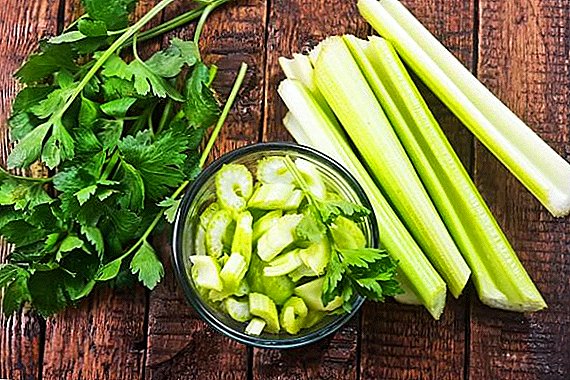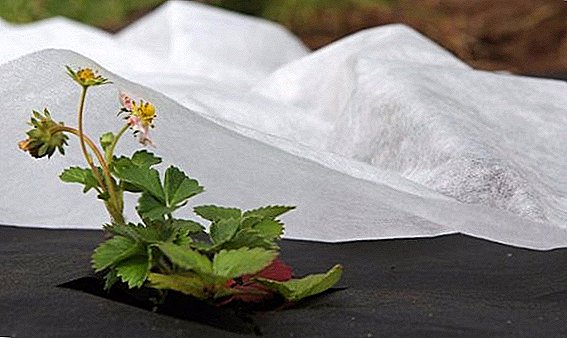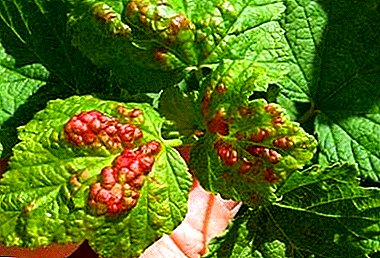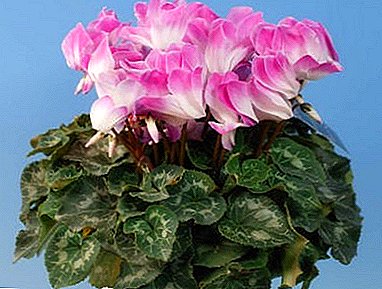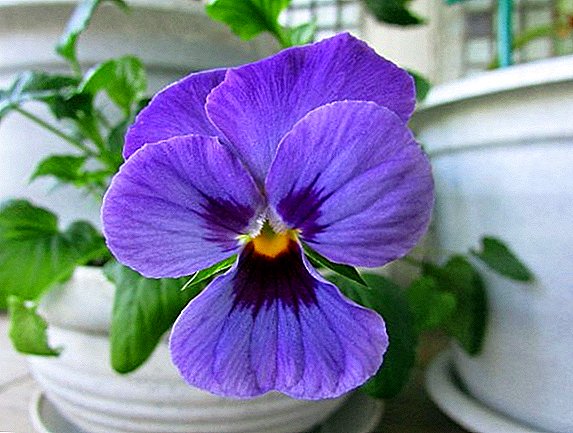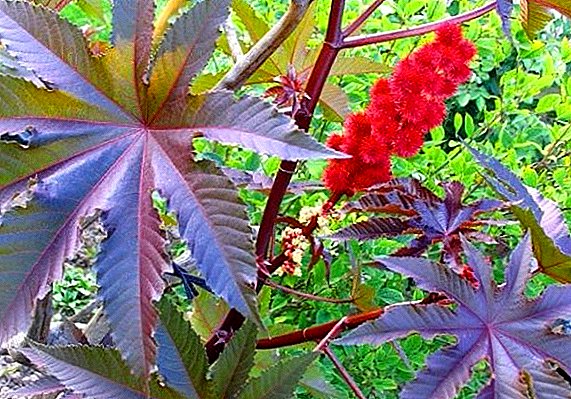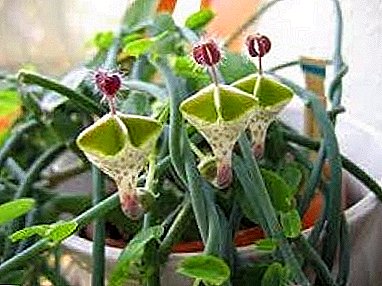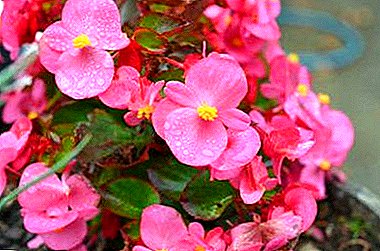
There are many types of begonias and each of them is wonderful in its own way. It is quite demanding in the care of a flower that needs special conditions.
One of the most important moments in the cultivation of a healthy and flowering plant is its transplant, which must be carried out, observing all the rules and taking into account the peculiarities.
It is the begonia transplant that our article is about. Learn all about how to do it correctly, which pot and substrate to choose and how to care for the plant so that it will delight you with a long and abundant flowering.
Growth features
Begonia habitat - rainforests and mountains, occasionally it is found in dry tropical and subtropical areas. This is a perennial plant, which is characterized by a creeping or tuberous rhizome, asymmetrical leaves and irregularly shaped flowers.
The flower is characterized by rapid growth - with the right care and favorable conditions, in a few years the plant can reach a height of 1 meter and a width of up to 50 cm.
To preserve the decorative and lush flowering, you need to properly cut the begonia.
When do I need a transplant?
Begonia roots develop quite slowly, which is why the flower does not need too frequent transfers. Do not replant a healthy and not fully mastered the plant.
However, there are a number of cases where transplantation is necessary:
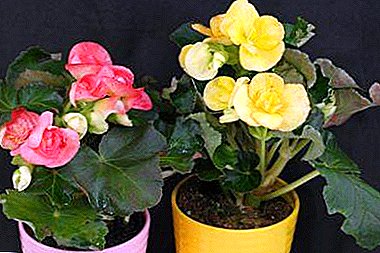 the pot became small for the root system and the roots began to look out from the drainage holes;
the pot became small for the root system and the roots began to look out from the drainage holes;- the plant is sick, which is expressed in the yellowing of the leaves or its general oppression (about why begonias have leaves curled and what needs to be done, read here);
- pests have started in the soil;
- previous pot spoiled.
If the begonia is small, then the need for transplantation is determined as follows: while holding the plant with your hand, turn it along with the pot and with your other hand to pull the pot up. If the roots cover the whole earthen room - a transplant is needed.
In addition, it should be remembered that the need to change the soil is also related to the fact that it is depleted with prolonged use, which creates negative conditions for the cultivation of begonias.
When is it best to perform the procedure?
The most optimal time for transplanting begonias at home is the early spring., before the period of active growth of the plant, especially flowering varieties. It is at this time that the flower adapts best, which is the key to its quick recovery and timely flowering.
Important! Young begonia needs to be transplanted annually, adult - once in 2-3 years.
Is it possible during flowering?
In no case can you disturb the begonia with a transplant during its flowering! It is necessary to wait until the plant fades, otherwise the flowering will stop, and the following may not come at all.
Soil and pot preparation
Preparing for begonia transplantation, the first thing you need to choose a suitable pot.
If a plant is being transplanted because of its illness, then the main thing is to replace the primer, and the pot can be left as it wasafter pre-disinfecting it.
It is best to give preference to the usual round pots of materials such as clay, ceramics or plastic, as they will prevent stagnant water and the root system decay.
Do not buy glass vases, as they are not functional, and the cultivation of begonias in ordinary soil negates their decorative effect.
The diameter of pots for young and rooted cuttings should be 5-6 cm, for plants older - 8-10 cm, the capacity after transplantation should be about a third larger than the previous one.
 All tanks must have drainage holes, if necessary, they need to be done independently. Also at the stage of preparation for transplanting, it is necessary to prepare a drainage, which will need to be placed on the bottom of the pot.
All tanks must have drainage holes, if necessary, they need to be done independently. Also at the stage of preparation for transplanting, it is necessary to prepare a drainage, which will need to be placed on the bottom of the pot.
As a drainage, you can use expanded clay, broken brick or pebbles. Begonia needs a loose soil, which has a high breathability.
For young plants the substrate must in equal parts consist of land and peat, and for planting adult flowers should combine the soil, peat and sand (the secrets of successful planting begonias, you can find here). Before planting begonia, the soil mixture should be watered with warm water.
How to do, step by step instructions
After the new pot and soil have been prepared, you can proceed directly to transplanting the plant, following the following procedure:
- you need to remove the begonia from the old pot, for which you should tilt it at an acute angle and lightly knock on the walls;
- further, you must carefully examine the roots and, if necessary, cut off old and dry;
- in case of rotting roots, it is necessary to completely clean the entire root system and rinse it in a weak solution of potassium permanganate;
- after the damaged roots are cut, they should be allowed to dry well and treat the cut sites with crushed activated or charcoal or cinnamon;
- after these actions, the prepared flower should be lowered into the center of the new pot and carefully, avoiding the possibility of breaking leaves or roots, start pouring the substrate into the voids along the edges of the earthen coma;
- if necessary, you need to slightly tamp the soil with your hands;
- pouring the earth into the pot, it is necessary to ensure that no less than 1 cm is left up to the upper edge, this space will be useful later for unhindered watering of the begonia;
- completing the transplant procedure, you need to water the plant so abundantly that the water begins to go out through the drainage holes.
After transplantation, it is necessary to limit the flow of sunlight to the plant, removing it in the depth of the room, away from the window sill for 3-4 weeks.
After purchase during flowering
After buying a flower in the store, it must be transplanted into a new soil and pot, thereby giving him the opportunity to get stronger faster and increase growth, otherwise he may wither and fix it will be impossible. The plant should be transplanted into the soil on the basis of peat, which should be saturated with moisture a few days before transplantation and allowed to infuse.
The ground should be slightly wet, not wet, otherwise the plant will not take root. However, it must be remembered that it is impossible to carry out transplantation of begonias immediately after the purchase; If the plant was bought in bloom, it is necessary to let it finish its flowering (about what to do with begonia after it has finished blooming, read here).
How to seat?
 In the spring of growing bush begonias need to plant. In order to do this, you need:
In the spring of growing bush begonias need to plant. In order to do this, you need:
- remove the plant from the pot;
- remove all overgrown stems, flower stalks and large castings;
- gently wash the roots off the ground with water;
- use a sharp knife to break the shrub with the roots apart so that each individual plant has a bud or a sprout;
- place the cut to sprinkle powdered activated charcoal or charcoal;
- roots need to be processed using the "root";
- Plants must be planted in different pots and watered.
Seeding should be done carefully, without damaging the young processes. and roots, so as not to injure the plant.
Care
After the plant is transplanted, you will need to follow a few simple rules:
- after abundant watering during transplantation, you must wait until the topsoil is completely dry (about 5 days) and only then return to normal irrigation;
- until the plant is rooted, it should be removed in the shade;
- eliminate heat, cold and drafts.
In the future, you can resume the standard care for begonia.
- Lighting. For abundant flowering begonia needs a diffused light (how to achieve beautiful buds?). It is best to place it on the windowsill of the western or eastern window, and in the winter to provide additional light.
- Watering. In summer, the flower must be watered twice a week, with a strong heat - every day. From about October, begonia should be watered only if the top layer of the earth has dried, and in winter - only once every few weeks. Watering is made by defended soft water, the surplus of which must be drained from the pan.
- Humidity. It is not necessary to spray the flower - because of this spotting may develop on the leaves. You can increase the humidity by setting the pot on a saucer with wet peat or putting pebbles in a tray with water and placing a flower on top.
- Temperature conditions.
Comfortable temperature for begonias in summer is 18-20 degrees, in winter - not less than 15 degrees.
The flower does not tolerate temperature drops.
- Fertilizers. Nutritional compounds prolong flowering and serve as an excellent prevention of pests and diseases. You can buy top dressing in a flower shop. The composition should be intended for indoor crops and contain magnesium, potassium, calcium, phosphorus, iron. The dosage should be 2 times lower than indicated in the instructions. It is not necessary to feed begonia in winter, at other times - twice a week. Use top dressing with chlorine can not.
Begonia transplantation is an important and responsible process., health, growth, blooming and color development in the future depends on it. That is why it is important to carefully prepare for this procedure, choose the time and choose the right pot and primer. All these efforts will not go unnoticed - in return, begonia will decorate everything around with its incredibly beautiful and long flowering.


 the pot became small for the root system and the roots began to look out from the drainage holes;
the pot became small for the root system and the roots began to look out from the drainage holes;